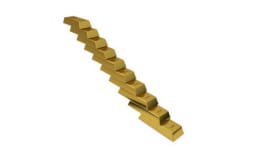How to Behave in Japan: Appropriate Japanese Behaviour

There are limits to culture learning - it can distort or boomerang if maladaptive.Decide on the right nuance of culturally appropriate behavior.
“WHEN IN JAPAN, BEHAVE AS THE JAPANESE DO.” IS THAT REALLY BEING CULTURALLY INTELLIGENT?
Deciding on the right nuance of culturally appropriate behavior in Japan is not easy. I used to work with Colorado-born Fred Hevers in Tokyo. He spoke astonishingly fluent Japanese, much better than mine. Impertinent though it was of me, I once suggested to him that he was far too polite when he spoke to many Japanese. He took it well, and seemed to ponder it.
We both moved on to other jobs. When we next met five years later, he was manning a stand as an investor at a Tokyo industry fair. Attending to some Japanese clients, Fred explained the product in his elegant Japanese. It was very impressive for a Westerner, save for the fact that it was – in my opinion, just as I remembered – far too polite and humble. Even listening made me feel uncomfortable.
I watched the Japanese clients while Fred spoke. It was soon clear to me that they were beginning to show – subtly, non-verbally – disdain and contempt. When they began leaving, Fred was effusive to the nth degree. As he neatly bundled up brochures and specifications, he handed them over ceremoniously, and bowed deeply, again and again, as they left the stand.
Appropriate Behavior in Japanese Society
I followed Fred’s customers a little way. Sure enough, once out of range, they expressed open contempt and scorn for Fred. Why? Putting myself in their shoes, the reason surely was that they saw Fred behaving as a mock-Japanese – a phony. The deep bows were, I thought, the final straw that may have strengthened any prejudices these Japanese held about Americans being insincere.
Fred was a good example of the American (or Australian) gone native. His case showed that there are limits to culture learning – it can distort or boomerang maladaptively. Fred needed more feedback of the kind I had offered him five years earlier, although I had only got a glimpse then of his counter-productive communication style.
Very likely, when he behaved in his “posh” Japanese manner, he was imitating some high-class Japanese gentleman he had once seen in an extremely formal and public situation. A situation where such behavior would have been acceptable and not appear ludicrous. Fred had never learnt this contextual or situational limit. He either truly believed such behavior appropriate in the product stand environment, or was afraid to try any other model. Did he perhaps fear he would make even bigger social mistakes?
Certainly, he would have known that he needed to be both polite and friendly in order to narrow the cultural distance. Instead of the big formal bows, a friendly nod of the head would have been sufficient. Regrettably, he decided to stick with what he did exceedingly well, even if some Japanese did, not so secretly, sneer at him.
YOU MAY ALSO LIKE




